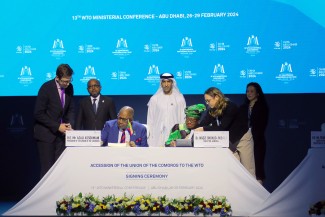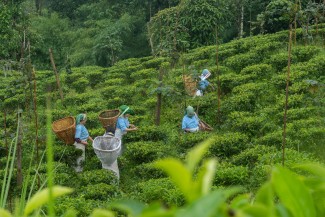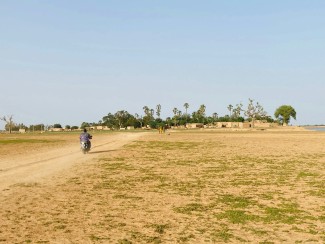Country is diversifying into soy, and farmers are seeing profits
Soybeans are a hot topic in trade circles nowadays. And they are also a hot commodity.
While the soy superpowers battle it out in the global market, smaller players are also making moves, nourishing homegrown soy industries and exploring a market share for themselves.
In Togo, approximately two-thirds of the population works in the agriculture sector, mostly with the country’s primary cash crops of cotton, cocoa and coffee. But reliance on that trifecta means any yield or price fluctuations have a big impact – hence the country is diversifying, and making good gains with soy.
“We looked at the market for international soybeans in 2013 and saw there was a lack of soybeans going to Europe and there were a lot of consumers wanting organic soy products. We started with a couple farmers in the north of Togo and by the end of 2014 we had exported 70 metric tonnes of soybeans,” said Patrick Eboe, managing director of Gebana Togo, one of the country’s largest exporters of organic soybeans.
Eboe, who is also the treasurer of Togo’s new National Association of Soy Exporters (ANCES), said he has witnessed the sector develop, and continues to consider how Togo’s soy products can become more competitive in the international marketplace.
NEW ORDER
One big step was the creation of the Interprofessional Council of the Soy Industry in Togo (CIFS-TOGO), which brings Togo’s soy farmers, processors and traders (ANCES) together to streamline the many moves a soybean needs to make to get from farm to foreign country.
“We needed CIFS-TOGO and the farmers’, processors’ and traders’ associations underlying it after the Government announced soybeans as one of the products that could best diversify revenue. At that time the markets were not very organized and we wanted to set up these associations because we need to have very direct and credible partners in the value chain,” said Jules Amenkey, monitoring and evaluation expert with the Enhanced Integrated Framework (EIF) in Togo.
When we started in 2015 exports were not very high, but in three years we have seen growth, in both the volume of production and the volume of exports. There are a lot of products that can be made from soybeans, and the sector is very important for families in rural areas.
Jules Amenkey, monitoring and evaluation expert with the Enhanced Integrated Framework (EIF) in Togo
EIF has been working with partners there since 2015 to improve the country’s export earnings and incomes from the trade in soy. The collaborative effort has resulted in export earnings increasing by 50%, with 16,620 tonnes of soybeans exported in 2016 and 21,066 tonnes in 2017.
“CIFS-TOGO is very important because they are creating recommendations for suppliers, and for buyers there will be a set of rules. They are working on having standard prices and a quality product. And this organization is an achievement as the project’s work is then sustainable in the long run,” said Amenkey.
WHAT’S THE DEAL?
With improved organization linking soy farmers to processors to traders, another step was to search out new export markets, an effort with the International Trade Centre (ITC) that also saw success.
Togo’s coops and companies are now selling soy to the Netherlands and Vietnam following trainings in export procedures and support to attend trade fairs. The two contracts total approximately US$250,000, and the firms that obtained them purchase directly from the source, meaning profits also more directly flow to farmers.
“When we started in 2015 exports were not very high, but in three years we have seen growth, in both the volume of production and the volume of exports. There are a lot of products that can be made from soybeans, and the sector is very important for families in rural areas,” Amenkey said.
As to what’s next after the streamlining of the value chain, improved organizational structures and contacts with export markets, Eboe is looking at both ends of the spectrum.
“We need to establish a research center for the seeds in Togo, as we need to ask: What kinds of seeds do we need to make a better product with high value? And also, how do we promote the soybean industry and make it competitive? How can we provide them with information – and even for the whole sub-Saharan region?” Eboe pondered.
If you would like to reuse any material published here, please let us know by sending an email to EIF Communications: eifcommunications@wto.org.



